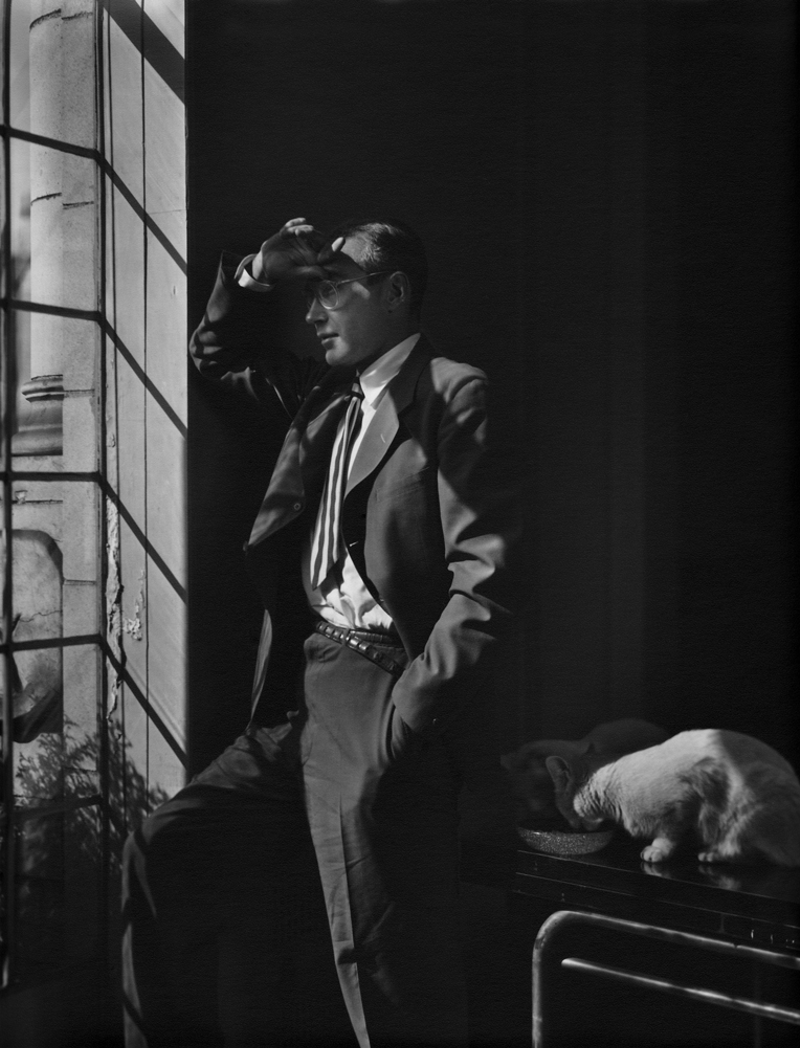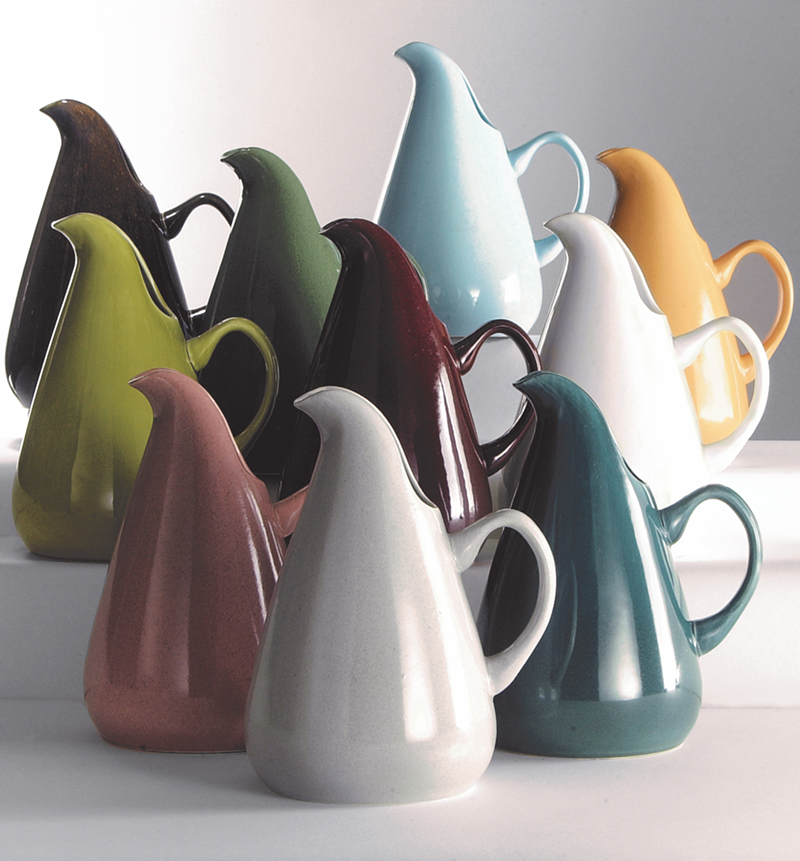Considering how renowned this region is for its ceramics history — the Cincinnati Art Museum has a sizeable collection of Rookwood Pottery — more people should know about a hidden gem of an exhibit at the Harmon Museum & Art Gallery in Lebanon, Ohio. It features the timeless work of the world-famous industrial designer Russel Wright, who was born and bred in this small city just 30 miles north of Cincinnati.
The museum, which was established in 1940 by the Warren County Historical Society, has a carefully curated, sizeable permanent collection of Wright’s tableware, barware and furniture. This includes vintage pieces from his colorful American Modern earthenware dinnerware collection, considered the best selling in history.
The exhibit features tableware from both Wright’s American Modern and Iroquois Casual China; his Art Deco-inspired unstained hard rock maple furniture; historical documents and newspaper clippings pertaining to his life; commemorative stamps of Wright’s flatware from the U.S. Postal Service’s 2011 Pioneers of American Industrial Design series; and the quirky choice of a cardboard painting believed to be Wright’s earliest known work. While the exhibit is displayed continually, the selection — largely acquired from donors — is rotated monthly. There are about 80 pieces on display and for every one, there are roughly seven to 10 in storage.
At first blush, a common visual theme for the pieces at the Harmon Museum comes to mind: curvilinear, organic shapes. Tableware with rounded edges and teardrop-like lines adorn the display case — a nature-inspired design indicative to Wright’s work. This design carries on through each piece in the exhibit, from the charming soft-colored dinnerware to exquisite glassware and brushed aluminum. What makes the Harmon collection special, says exhibit curator Michael Coyan, is that the diverse pieces from throughout his career prove its timelessness.
“Kenneth Clark, the great art historian, said that, ‘Art must use the language of the day,’ ” Coyan says. “We know that languages are never fully ever dead and styles come back. Russel Wright in his lifetime did not live long enough to see his style of beautiful serving pieces come back into great popularity, but 10 to 15 years after his death — boom, there it is.”
Wright certainly built up an extensive résumé. Born in 1904, he studied at the Art Academy of Cincinnati with esteemed Covington painter Frank Duveneck before even receiving his high school diploma. After studying at Princeton University, he moved to New York City and worked in set design under theatrical and industrial designer Norman Bel Geddes. He also garnered inspiration from nature when summering in upstate New York.
After marrying Mary Small Einstein, a designer and sculptor, in 1927, they started a Manhattan studio. American Modern dinnerware was introduced in 1939 and quickly became a must-have for homemakers in the 1940s and the ’50s; the styles started moving quickly from department store shelves and onto dining room tables. Amid the current revival in Modernism, select pieces are still being manufactured, and there’s a healthy market for originals.
Wright was based in New York until his death in 1976. What made him a household name was the unprecedented commercialization of his work.
“He was probably the first to have personality-based merchandise,” says John Zimkus, the Harmon’s historian and director of education. “He really did make a mark as an industrial designer. Before there was Martha Stewart, Tommy Hilfiger or Ralph Lauren, Russel Wright’s name on things sold.”
Wright’s legacy continues. The Russel Wright Design Center operates Manitoga, his Modernist home and studio in Garrison, N.Y., and it’s a tourist attraction. Zimkus says Wright’s local connection and the museum’s exhibit should be a source of pride in Lebanon, where his childhood home still stands, as well as in Cincinnati.
“Great art doesn’t have to take place or be created somewhere else,” he says. “Influential people are from all over and southwest Ohio — Lebanon and Cincinnati — has made its mark on the world of art. This is simply a reflection of that.”
The Harmon Museum & Art Gallery is located at 105 S. Broadway, Lebanon. More information: harmonmuseumohio.org.







